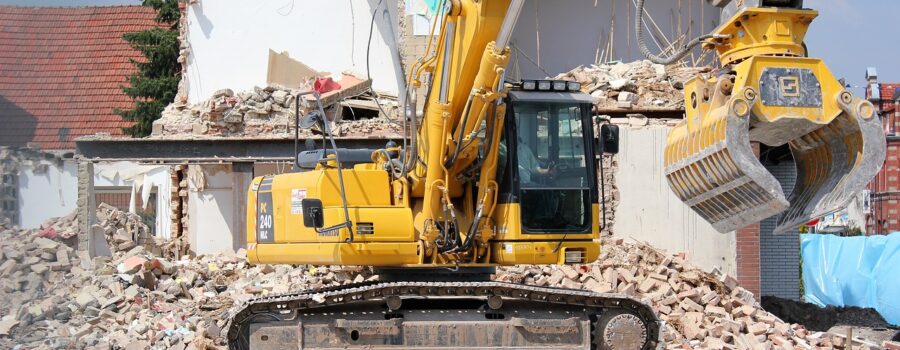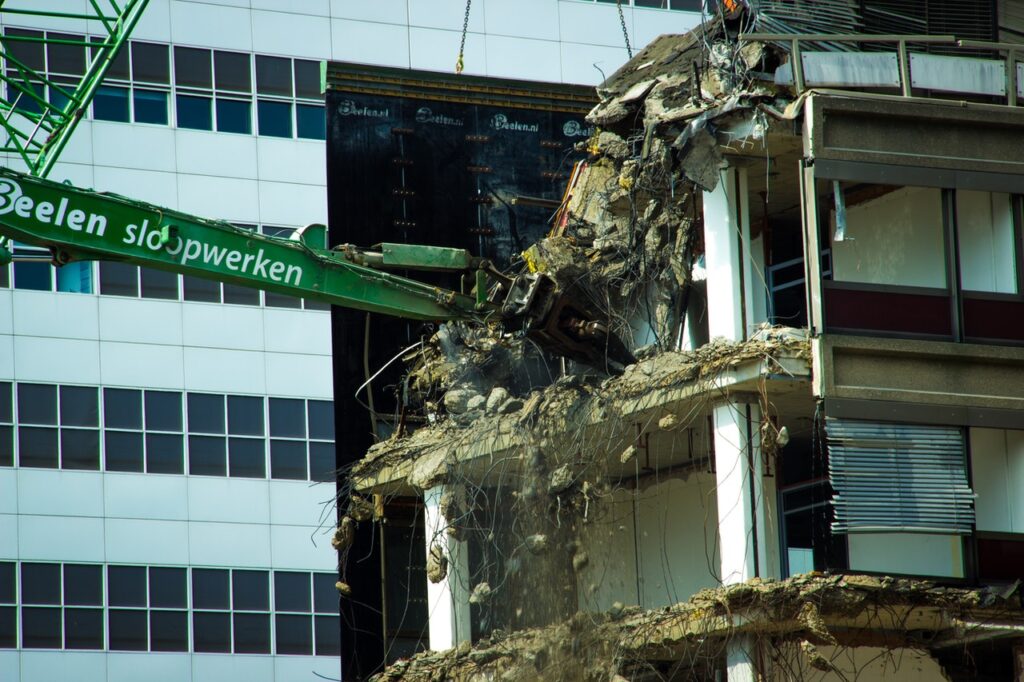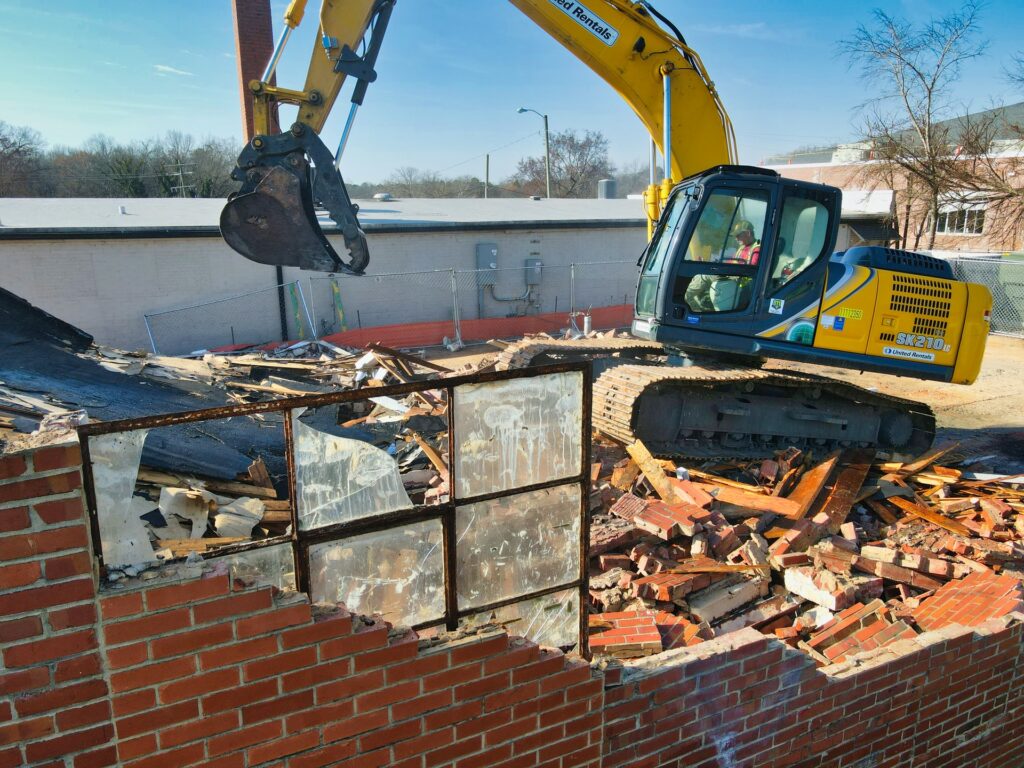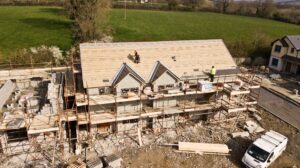
Do I Need a Permit to Tear Down a House? Demolition Permits Explained
Many remodeling and construction projects in Los Angeles and Southern California require a permit before any work can begin. Without having a permit on hand, you could be fined or face other consequences for going ahead with non-permitted work.
One type of work that must always be permitted is demolition work. If you’re looking to tear down a house to make way for the construction of another home or building, you must first apply for and obtain a demolition permit. While there are some exceptions to the rule, you will typically be required to obtain a demolition permit for:
- Making an addition to your home that requires an extensive amount of demolition work
- Removing or razing a main structure from a standard lot
- Removing or razing all types of accessory structures that contain basement-type foundations, hazardous materials, utility systems, and mechanical systems
The purpose of a demolition permit is to make sure that the work you are about to perform adheres to local code and regulations. You can find all of the information you need about demolition permits and when they are required by visiting this link. You can also contact the LADBS or visit one of their offices in Los Angeles.
The Los Angeles Department of Building and Safety is the department in charge of providing people and contractors with the permits they need to complete a construction or demolition project of any kind. Before you tear down a home, it’s essential that you seek a demolition permit. This article provides a more thorough look at what these permits are and how to be approved for one.
Factors to Consider when Getting a Demolition Permit

The main factors that you should consider when obtaining a demolition permit include:
- Identify if the work is a major alteration or demolition
- Determine what site control measures will need to be implemented
- Check for ordinances that may delay a demolition
- Determine if soil must be compacted
- Identify deconstruction ordinance requirements
- Check tree code requirements
- Determine if sewer cap or other utility requirements are necessary
- Obtain signatures on a standard intent to demolish form
Identify the Work
First, it’s important to identify if the work you’re about to do is considered to be a major alteration or complete demolition. A demolition permit is only required when the work you’re doing is demolition work. Demolition work is defined by removing every exterior wall that’s situated above the foundation. On the other hand, substantial alterations involve the removal of around 50% or more of exterior walls. Major alterations require an entirely separate permit. There are times when a major alteration project will turn into a demolition. In this situation, it’s essential that you cease work immediately to apply for a demolition permit.
Site Control Measures
Another factor to consider is the types of site control measures that must be implemented for the project. The majority of residential structures and accessories will require a certain amount of site control measures for a demolition to occur. These measures can include documentation about lead paint certifications, removing any exterior painted surfaces, a demolition plan, an asbestos survey, and plans for demolition debris containment.
Check Local Ordinances
You should also check for any local ordinances that might delay the demolition project. Many city codes will require a set delay before demolition work can begin. This delay is designed to make sure that the right notices are sent to the right organizations. Signs may also need to be placed on the demolition site before work can begin. These signs are almost always needed when completing a demolition project on a residential property.

Determine the Soil
There are times when the soil in the area will need to be compacted after demolition takes place. Once the demolition has occurred, it’s possible that the soil underneath the demolished structure has become too loose, which means that it wouldn’t facilitate new construction. In this situation, the soil may need to be replaced and compacted. Keep in mind that this type of work will require a special soil inspection to make sure that you completed this process as intended. The inspection must be performed by an independent agency.
Identify Construction Ordinance Requirements
Search for deconstruction ordinance requirements at the beginning of the process. Many houses, duplexes, and other single-family structures will have special deconstruction ordinances in place to make sure that certain buildings are deconstructed in a specific manner. This type of ordinance regularly applies to historic buildings. When a deconstruction ordinance is in place, it’s likely that a deconstruction contractor will need to disassemble the home in a manner that allows materials to be salvaged and eventually reused.
Check Tree Code
You should also look into any local tree code requirements. These requirements are designed to facilitate the preservation of trees in your area. You may need to complete tree code requirements in the time before the demolition occurs, which is when the demolition delay is in place. Keep in mind that the majority of municipalities won’t go ahead with approving the permit until tree code requirements have been met. If you don’t meet these requirements, your permit approval could be delayed, which means that the demolition project would be delayed.
Determine Utility Requiremnts
In some areas, sewer cap guidelines and other utility requirements will be in place. These requirements can differ depending on the city. In the event that a city sewer is connected to a home that’s about to be demolished, a new sewer may need to be installed during the demolition process. If the sanitary system that served the home was a cesspool or septic tank, you will be tasked with obtaining an inspection as well as a decommissioning permit before you can go ahead with abandoning these systems.
Sign Intent to Demolish Form
A basic intent to demolish form will need to be signed by all parties involved with the project before you are able to legally begin a demolition project. Unless you own the property in question, this type of form must be signed beforehand. If there are multiple property owners, each owner will be tasked with signing the form.
When a Demolition Permit is Not Required
While demolition permits are almost always required when any type of demolition work is set to take place, there are times when demolition permits aren’t needed. In fact, certain structures will never require a demolition permit. You won’t need to apply for and obtain a permit when:
- Demolishing the interiors of a structure when working on a renovation or remodeling project
- Removing porches or decks when you intend to rebuild the structure you removed
- Removing small garages or small sheds that aren’t outfitted with utilities or basement-type foundations
Additional Plans and Specifications Needed for Certain Projects

You will likely need to provide the LADBS with plans and specifications when working on certain projects. Plans and specifications may be needed for:
- Any building that contains at least five stories
- Any building that consists of a variance
- A basement that’s located within six feet from another building
- Walls that have a height of 20 feet or more between stories
- Any post-tensioned or pre-stressed concrete structure
- Party walls
- When you only want to demolish some of the structure
- Footings that are positioned adjacent to footings of an entirely different building
You will also need to provide plans and specifications for:
- The filling of basements
- Required clearances
- The demolition of additional structural features
- Thickness of any party walls
- Shoring of high walls
- The method you’re using to demolish the building
- Protection of any adjacent property
Summary
In Los Angeles, demolition permits are regularly required when you want to demolish a structure of any kind. The demolition of a residential home or commercial building can only occur after a permit has been obtained and several other steps have occurred. Make sure that you apply for a demolition permit when making an addition to your home that requires ample demolition, removing the main structure from your lot, or removing/razing accessory structures that have been outfitted with utilities or mechanical systems.
While demolition permits are fairly straightforward, you may need to provide the Los Angeles Department of Building and Safety with additional documentation in the event that the demolition work involves certain processes. You could avoid seeking a demolition permit if you’re removing a porch, deck, small garage, or small shed.
If you’re unsure of the need to obtain a permit before work can begin, it’s very important that you speak with a professional. As mentioned previously, completing demolition work that hasn’t been permitted could come with high penalties and fees in the event that the city identifies the issue. You can avoid these penalties altogether by applying for a demolition permit at the LADBS.

Jason Somers, President & Founder of Crest Real Estate
With over 15 years of professional experience in the Los Angeles luxury real estate market, Jason Somers has the background, judgement and track record to provide an unparalleled level of real estate services. His widespread knowledge helps clients identify and acquire income producing properties and value-ad development opportunities.
Learn more about Jason Somers or contact us.



